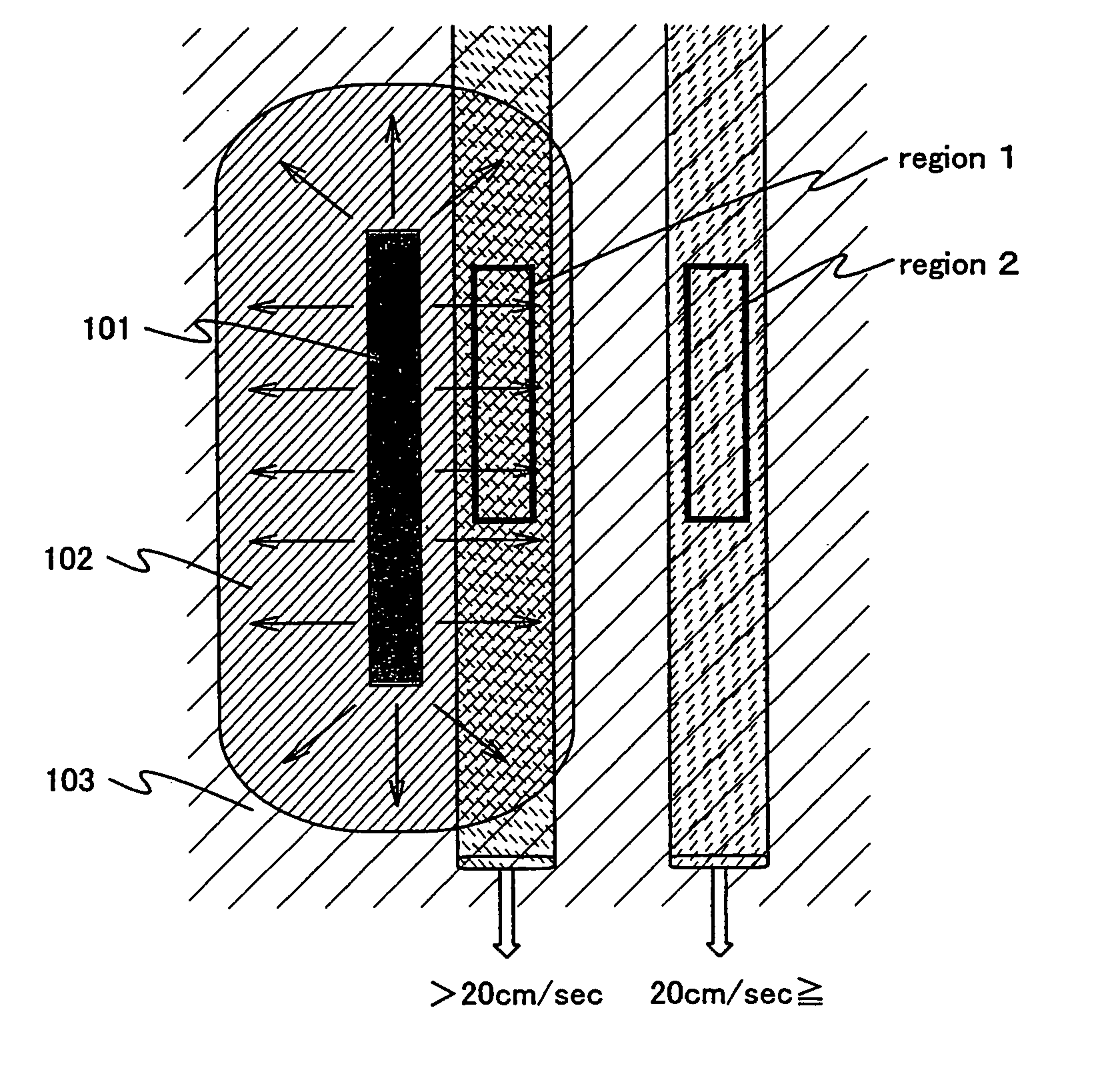Method of manufacturing a semiconductor device
a manufacturing method and semiconductor technology, applied in the direction of semiconductor devices, electrical appliances, transistors, etc., can solve the problems of insufficient mobility to obtain sufficient current, insufficient operation speed, and particularly inferior current and mobility characteristics of single crystal transistors, so as to reduce the size of semiconductor devices and improve the tolerance against physical impact
- Summary
- Abstract
- Description
- Claims
- Application Information
AI Technical Summary
Benefits of technology
Problems solved by technology
Method used
Image
Examples
embodiment mode 1
[0062] In the present embodiment mode, there will be described a method of manufacturing a TFT, which combines, in addition to controlling the scan speed of laser light, controlling if thermal crystallization with a catalytic element is performed or not.
[0063] First, a base film 201 is formed by deposition on a substrate 200 as shown in FIG. 6A. As the substrate 200, a non-alkali glass substrate, represented by, for example, #1737 glass substrate produced by Corning corp. is used. In addition to the #1737 glass substrate, the barium borosilicate glass such as #7059 glass may be used as the substrate, and a quartz substrate, a silicon substrate, a metallic substrate, or a stainless steel substrate, which has an insulating film formed on the surface, may also be used. Also, a plastic substrate that has a heat resistance to a processing temperature in the present embodiment mode may be used.
[0064] The base film is formed of an insulating film such as a silicon oxide film, a silicon n...
embodiment mode 2
[0099] In the present embodiment mode, there will be described the case of irradiating laser light for crystallization after crystallization with a catalytic element in a perpendicular direction to a substrate (vertical growth) in a p-type region.
[0100] In each of FIGS. 9A and 9B, a mapping figure of an inverse pole figure of a plane direction in a crystal plane in a horizontal direction to a substrate is shown. Before irradiating laser light, a catalytic element is added to a semiconductor film and heat treatment is performed in FIG. 9A In FIG. 9B, heat treatment is performed to a semiconductor film without adding a catalytic element.
[0101] In FIGS. 9A and 9B, samples to which laser light is scanned in a horizontal direction to a substrate are used. In irradiating laser light, continuous emission Nd:YVO4 laser is used, the energy density is set to 10 MW / cm2, and the scan speed is 50 cm / sec. The film thickness of the semiconductor film is 150 nm. It is noted that an error within ±...
embodiment 1
[0134] In the present embodiment, a semiconductor display device, that is one of semiconductor devices manufactured in accordance with a manufacturing method of the present invention, is given as an example, and a scanning course of laser light in crystallization will be described.
[0135]FIG. 12A shows a canning course of laser light in irradiating laser light to an n-type region, and FIG. 12B shows a canning course of laser light in irradiating laser light to a p-type region. It is noted, in FIGS. 12A and 12B, that a semiconductor film 850 is formed on a substrate and broken lines show regions in which a pixel region 853, a source line driving circuit 854, a gate line driving circuit 855, an image signal processing circuit 856, a VRAM (Video Random Access Memory) 857, and a timing signal generating circuit 858 are respectively formed in the semiconductor film 850.
[0136] The VRAM 857 has a function of memorizing data that has image information input from the outside. The image sign...
PUM
 Login to View More
Login to View More Abstract
Description
Claims
Application Information
 Login to View More
Login to View More - R&D
- Intellectual Property
- Life Sciences
- Materials
- Tech Scout
- Unparalleled Data Quality
- Higher Quality Content
- 60% Fewer Hallucinations
Browse by: Latest US Patents, China's latest patents, Technical Efficacy Thesaurus, Application Domain, Technology Topic, Popular Technical Reports.
© 2025 PatSnap. All rights reserved.Legal|Privacy policy|Modern Slavery Act Transparency Statement|Sitemap|About US| Contact US: help@patsnap.com



